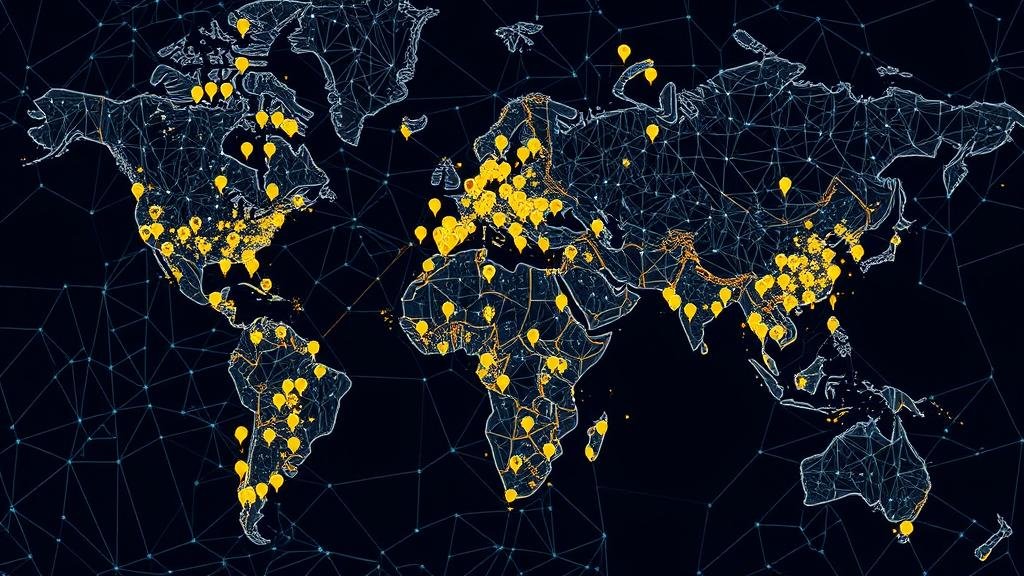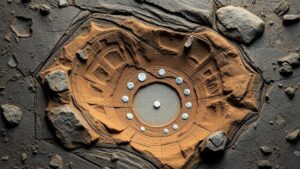Using AI to Map Historical Religious Processions for Potential Relic Trails
Using AI to Map Historical Religious Processions for Potential Relic Trails
The intersection of artificial intelligence (AI) and historical studies has opened new avenues for research, particularly in the field of religious processions. This article explores how AI technologies can be employed to map historical religious processions, leading to the discovery of potential relic trails. By leveraging machine learning algorithms, natural language processing, and geospatial analysis, researchers can create a digital cartography of faith that highlights the movement of relics and their cultural significance.
Historical Context of Religious Processions
Religious processions have been integral to various cultures throughout history. e events often embody communal faith practices, showcasing the societal importance of the objects of veneration, such as relics. For example, the Procession of the Holy Thorn in France, documented since the 13th century, is a significant event that celebrates the relic thought to be the crown of thorns of Jesus Christ.
Similarly, the Feast of Corpus Christi, which has its origins in the 13th century, showcases the Catholic tradition of processions through the streets of various cities, emphasizing the belief in the real presence of Christ in the Eucharist. In the year 1264, Pope Urban IV instituted the feast, and it has since evolved, with cities like Toledo and Mexico City showcasing elaborate and historically rich processions every year.
Artificial Intelligence Applications in Religious Studies
The use of AI in religious studies is rapidly evolving. AI algorithms can help analyze large datasets, uncover hidden patterns, and visualize historical movements. The following are key applications:
- Natural Language Processing: Tools can analyze historical texts, such as ecclesiastical records and manuscripts, to identify mentions of processions, their routes, and associated relics. For example, the Sistine Chapels records mention various processions that highlight its significance.
- Geospatial Analysis: AI tools can utilize geographic information systems (GIS) to overlay procession data on modern maps, offering visual insights into historical human movement and spatial relationships.
- Machine Learning: These algorithms can categorize events and predict future processions based on historical data, enhancing understanding of religious practices and their evolution.
Methodology for Mapping Processions
The methodology for utilizing AI to map historical religious processions involves several steps:
- Data Collection: Researchers compile historical records, maps, and archival documents that detail the dates, locations, and descriptions of processions.
- Data Processing: Natural language processing techniques are employed to extract pertinent information from unstructured data sources.
- Geospatial Imaging: Using GIS, researchers can plot these details on maps to visualize routes and significance.
- Pattern Recognition: Machine learning algorithms analyze the visualized data to identify trends in movement, significant landmarks, and potential relic locations.
Case Study: St. James Way and the Camino de Santiago
The Camino de Santiago, a pilgrimage route established in the 9th century, serves as a prime example of how AI can help unveil the complexities of historical religious processions. The pilgrimage celebrates the relics of St. James, a significant figure in Christianity.
By using AI to analyze the numerous records of pilgrims who traversed this route, researchers can identify significant stops and historical events linked to the relics. Data suggests that nearly 300,000 pilgrims undertake the journey annually, and AI mapping could enhance awareness of historical pathways, finding previously undocumented trails.
Future Implications and Applications
The implications of mapping historical religious processions using AI extend beyond academic research. Understanding these trails can enhance tourism, providing insights for pilgrims and tourists interested in cultural heritage.
Also, religious organizations can utilize this knowledge to promote awareness about historical relics and their significance. For example, initiating educational programs based on mapped processions can connect younger generations with their heritage.
Addressing Potential Challenges
Several challenges must be addressed in using AI for this purpose:
- Data Availability: Some historical documents may not be digitized or accessible, limiting comprehensive analysis.
- Cultural Sensitivity: Researchers must navigate the complexities of religious beliefs and practices with respect and accuracy.
- Data Interpretation: AI outcomes depend on the quality of data and algorithms, necessitating rigorous checks and historical expertise.
Conclusion
The use of AI to map historical religious processions holds immense potential for uncovering hidden relic trails and enhancing our understanding of religious practices. As technologies continue to evolve, so too will our capabilities in preserving and interpreting religious heritage. The balance between data analysis and cultural sensitivity will define the future of such research, ultimately enriching both academic knowledge and public appreciation of religious history.
In sum, the marriage of AI technology with historical studies presents a transformative opportunity for scholars, religious organizations, and cultural heritage advocates alike. A commitment to ethical research practices and continued dialogue with communities will ensure that this innovation preserves the sanctity of faith while illuminating paths forged by centuries of tradition.



